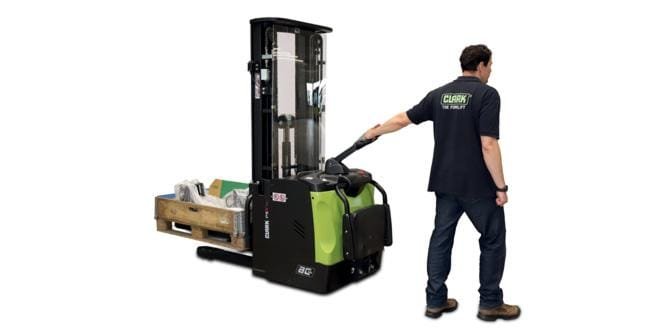Technology persists at the wheel of progress, but when it comes to preventing deadly tractor trailer crashes, implementation remains erratic. Sophisticated safety features capable of averting catastrophic collisions—automatic emergency braking, adaptive cruise control, and comprehensive collision avoidance frameworks—languish in an incomplete adoption stage within the commercial trucking sector. Rather than a swift decline in fatal incidents, statistics remain stubbornly elevated.
Automatic Emergency Braking (AEB) stands as a crucial aspect of modern heavy-duty truck design. AEB systems analyze traffic ahead and autonomously apply brakes if a crash is imminent or unavoidable by conventional driver action. Regulatory winds are shifting: new mandates scheduled for 2025 intend to make AEB mandatory across all heavy trucks. Yet with industry inertia and logistical hurdles, fleets face gradual timelines before such systems blanket American highways.
Even now, many tractor trailers barrel across interstates devoid of these lifesaving electronics. Reasons cascade from high retrofit costs to inconsistent training protocols—the latter appearing especially nettlesome where technology intersects human variability. One case involved an otherwise diligent truck operator’s struggle with an unfamiliar override sequence; upon abrupt system engagement triggered by an ambiguous scenario (a car slowing harmlessly ahead), the rig halted on open road instead of modulating speed sensibly. Catastrophe followed close behind—a chilling reminder that algorithmic vigilance can be thwarted by convoluted human-machine dynamics.
Driver behavior threads another needle through this narrative’s fabric. Systems often pepper cabs with frequent warnings; drivers acclimate or become irritated enough to disengage essential alerts altogether. Here lies a peculiar contradiction: technology saves only when permitted its voice—yet too much ‘crying wolf’ undermines trust faster than you can say “ghost in the machine.” Some companies respond by adding even more advanced collision avoidance layers—including radar-driven lane keeping aids and robust telematics paired with Heavy Vehicle Ground Truth Trip Recorders (GTTRs). These devices meticulously parse driving scenarios using field data seldom found outside research institutions; experts hope their metrics will eventually redefine how safety gets measured at scale.
However extensive—or expensive—the solution set becomes, results depend not merely on hardware but also culture transformation inside fleet organizations. Training regimens lag behind technological advances: operators may receive marginal orientation regarding overrides or system quirks yet face real-world ambiguity daily out west on long-haul routes where unexpected situations abound. Unlike cars zipping through urban gridlock guided by near-infallible sensors calibrated for bumper-to-bumper choreography, trucks lumber under unique physics requiring different calibration logic altogether—a thin line separates being prudent from overzealous intervention.
For every tale touting improved outcomes due to newer models grading as “acceptable” in institutional tests—a sure feather in any corporate cap—a countercurrent pulls back toward cautionary tales about technology implemented before its time or without sufficient thought for end users’ lived experience. The reality? Wide-scale impact remains elusive because deployment is uneven geographically as well as demographically within trucking firms.
Sometimes discussion veers towards regulatory optimism: Agencies like NHTSA invest deeply into prototyping GTTRs for Class 8 rigs and categorize operational data based on stress-tested real-world scenarios—tools designed less for show than steady evolution toward seamless integration within autonomous systems someday soon…although maybe not quite yet given today’s patchwork rollout pace across states and carriers both large and modest alike.
In exploring adjacent topics such as “driver comfort” technologies—from upgraded cabins meant to ease fatigue to augmented displays that layer information just off center dash—it becomes evident that advances arrive nonlinearly. Not all innovations stick immediately; many languish waiting cultural buy-in or regulatory greenlights which don’t always align predictably with market realities.
One would imagine momentum accelerating now that clear legislative benchmarks approach—for instance January 2025’s anticipated ruling around AEB requirements promising sharper oversight—and surely insurance actuaries track every decimal uptick assiduously since risk recalibrates profitability overnight. Still trucks clattering down old Route 66 bristle against uniform adoption rates despite being equipped sometimes haphazardly—with some owners installing state-of-the-art gear while others choose costlier deferred options dreaming perhaps mistakenly about grandfather clauses late into next decade.
Addressing these complex variables feels akin to herding cats rather than flipping a switch universally appreciated among decision makers—or those invested directly after long hours logged between El Paso sunsets and early Baltimore dawns. While imminent tragedy may seem like something you’d read about more often during cyclical news peaks following dramatic pile-ups involving hazardous materials tankers gone astray northbound near icy mountain passes—on ground level improvement happens grain-by-grain rather than avalanche style.
Nevertheless it would be foolhardy now to bet against widespread eventual deployment given both public scrutiny intensifying after each preventable misfortune plus federal agencies’ methodical push spearheaded through performance standards harmonized across jurisdictions vying quietly underneath headlines dominated elsewhere lately. Knock-on effects ripple unpredictably: supply chain optimization initiatives accidentally engender wider data sharing between competing fleets once loath even acknowledging one another at fuel stops previously regarded jealously competitive territory—all unexpected fruits from seeds sown far afield technical regulations intended initially merely so drivers could stop shorter on rain-slicked blacktop after dusk falls unexpectedly fast somewhere eastbound beyond Abilene proper.
Should there ever exist perfect congruity between innovation’s promise, regulatory shepherding, practical engineering translation onto America’s labyrinthine road network? Maybe yes last month but today who knows? Thus unfolds yet another chapter clinging stubborn inside tomorrow’s rolling headlines involving lives upended near weigh stations still haunted sometimes more by missed opportunities than actual mechanical failure itself.



